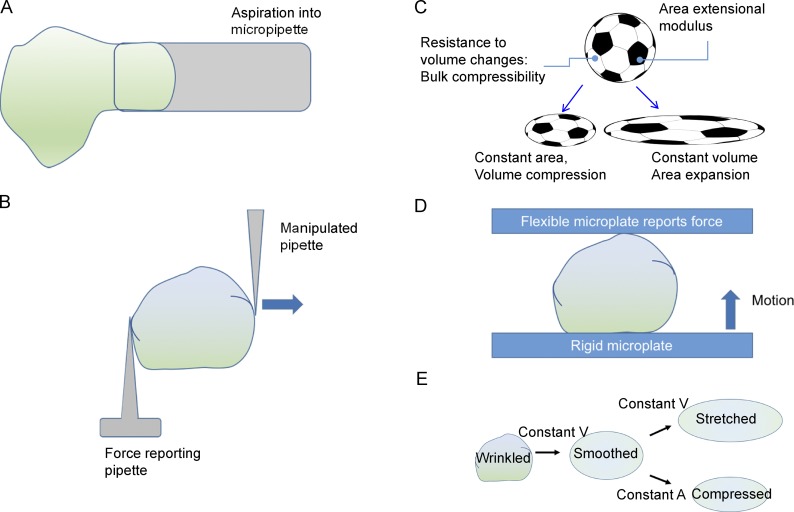Figure 1.
Methods to measure nuclear mechanics and key mechanical parameters important for describing nuclear shaping. (A) An isolated nucleus is aspirated into a micropipette. The outer boundary of the nucleus represents the nuclear membrane, while the inner boundary represents the nuclear lamina. The wrinkles represent folds in the nuclear envelope and lamina. (B) The micromanipulation technique in which a pipette is attached to one end of the isolated nucleus, and a force-measuring pipette is attached to the other end. The manipulating pipette is translated away (indicated by arrow), and force versus nuclear extension is quantified. (C) A sphere with minimum surface area to volume ratio must increase in its area or decrease in its volume (or a combination of both) during flattening. The resistance to volume changes and to area expansion are natural mechanical parameters relevant in nuclear shaping. (D) Schematic of one type of a nuclear compression measurement in which a rigid microplate is translated toward a flexible microplate, and the flexible microplate reports force. (E) During cell spreading, the nucleus flattens at constant volume and constant area until excess area in the lamina is smoothed out. After that, the nucleus can flatten only if the area (A) is stretched or if the volume (V) is compressed; the resistance to both changes is high, and forces in a typical fibroblast cell are not large enough to cause such changes. As a result, the nucleus reaches a steady-state shape.

